Episode 7
Museum Work in Iceland (with Katie Teeter)
Show Sponsor
Landslide Creative provides custom website design and development for museums who want to increase their engagement and connect with their visitors, donors, and volunteers. Stop fighting with your website and focus on growing your impact. Visit LandslideCreative.com to learn more.
Show Notes
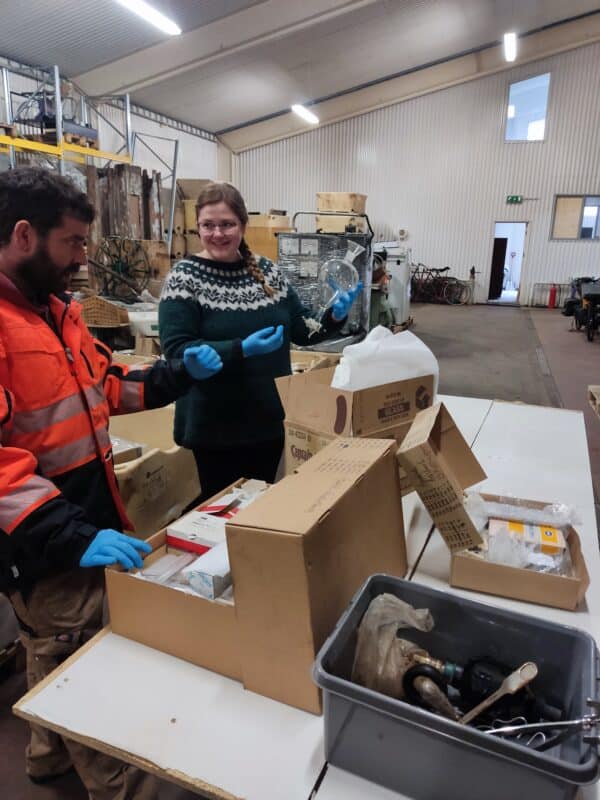
About the Episode
What’s it like working in museums in Iceland? Katie Teeter is American, but she’s been living in Iceland for ten years. She works at two museums, one private and one public, and is finishing up a Master’s in Museum Studies at the University of Iceland. I chatted with Katie about her career and learned some cool facts about the Icelandic museum field.
We the Museum is currently in-between seasons, This is a bonus episode, which may become an occasional series about museum work around the world.
About our Guest
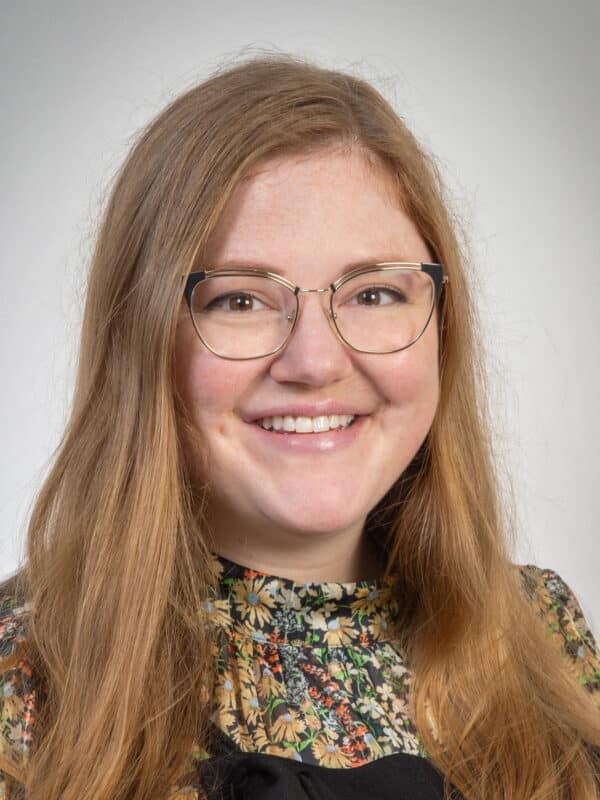
Katie is an American who has been living in Iceland for the past 10 years. She originally moved to Iceland to get an M.A. in Medieval Icelandic Studies, and is now finishing her second M.A. in Museum Studies, both from the University of Iceland. Katie currently works in Science Communication, Sales & Marketing at the Geothermal Exhibition, and as a freelancer for Icelandic museums and exhibitions. She and her husband live in Reykjavík with their two cats. She is on a mission to visit every Icelandic museum and exhibition – you can follow her journey on Instagram: @MuseumsinIceland.
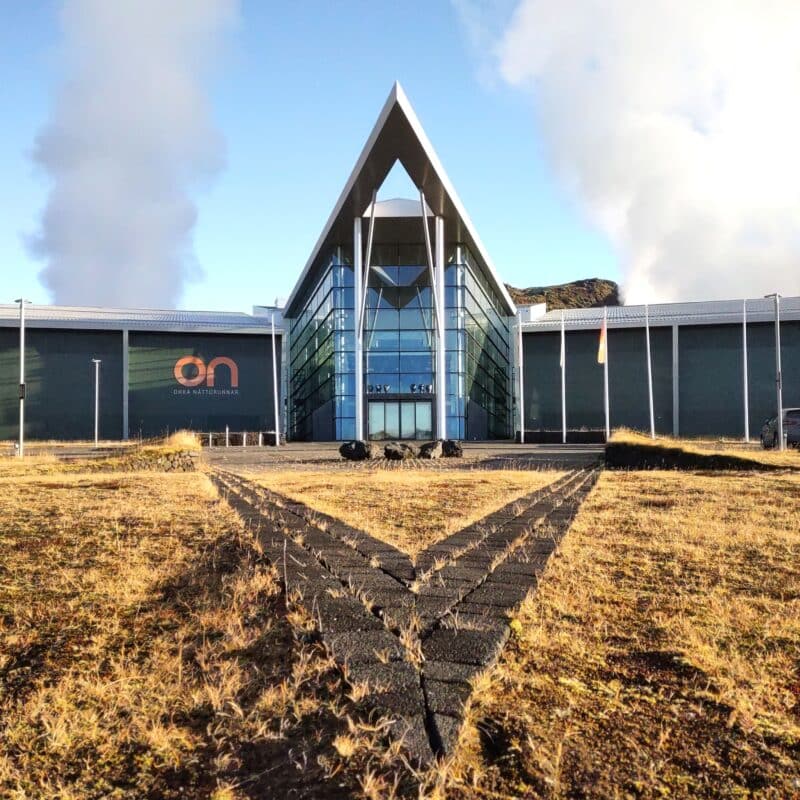
Clarifications
A few things Katie double-checked after our conversation:
- The research grant we’ve gotten is from the Icelandic Centre for Research (Rannís), and it is the Research and Innovation Grant.
- There are currently 47 accredited museums (I said between 40-60)
- Byggðasafn Reykjanesbær has roughly 23,000 registered objects plus their photography collection. The registered photographs number 46,000, but there are many more waiting to be registered.
Links
Museums in Strange Places Podcast – Hannah’s old podcast about Icelandic museums
Sarpur – Browse the national collections database for Accredited Museum
Museums Mentioned:
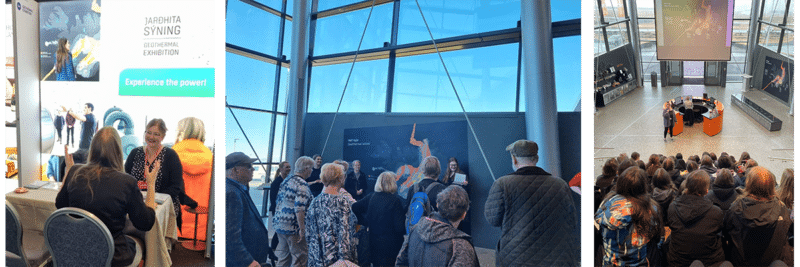
Geothermal Exhibition at the Hellisheiði ON power plant
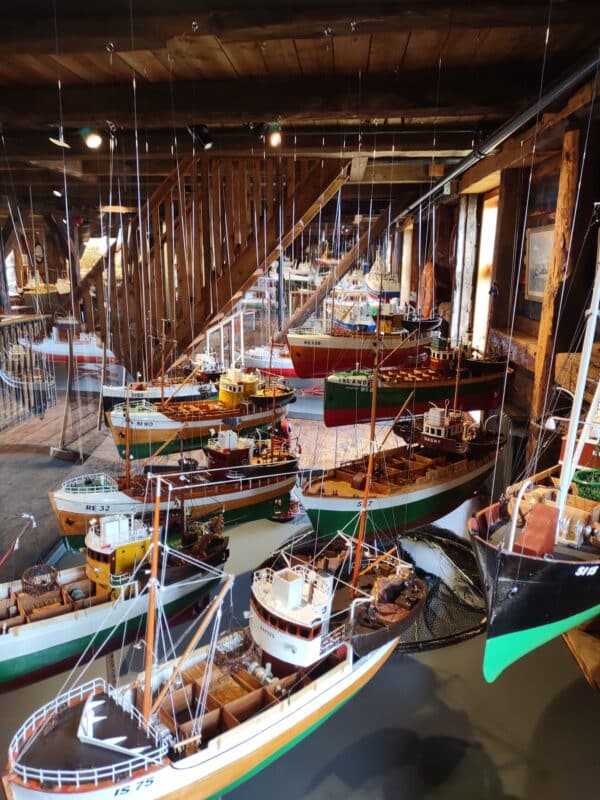
Byggðasafn Reykjanesbæjar (the regional history museum)
Whales of Iceland
National Museum of Iceland
The Settlement Exhibition (at Reykjavík City Museum)
Saga Museum
The Icelandic Phallalogical Museum (penis museum)
Hveragerði Stone and Mineral Museum (in the gas station – sadly now closed)
Academic Programs:
Viking and Medieval Norse Studies/Medieval Icelandic Studies
Museum Studies MA
Museum Studies Doctoral Program
Transcript
Hannah Hethmon (Narration): Welcome back to We the Museum: a podcast for museum workers who want to form a more perfect institution.
I’m your host, Hannah Hethmon, Owner and Executive Producer at Better Lemon Creative Audio, where I make podcasts for museums, history organizations, and other cultural nonprofits.
We are currently in between seasons. I’m recording new episodes for season two, coming soon. But while you eagerly wait, I thought we’d do something a little different, a little fun.
As some of you may know, I have a Masters’s in Viking and Medieval Norse Studies from the University of Iceland in Reykjavik. I had the time of my life living and studying in Iceland from 2013 to 2015. And when I left, really missed it, so in 2017 I went back for 9 months to do a Fulbright, and that’s when I started podcasting. I had a show called Museums in Strange Places—which is still online by the way. interviewed people at I think 25 different Icelandic museums. And that’s what led to a full-time job producing podcasts for museums, which is what I still do now.
One of my classmates from the Masters’s program in 2013 also went on an interesting career journey inspired by Icelandic museums, but unlike me, she managed to stay after our program wrapped up.
Katie Teeter is American, from the midwest, and has been living in Iceland for 10 years. So I called her up to chat about her experiences working in Icelandic museums and getting a Master’s in Museum Studies from the University of Iceland.
If you like this episode, maybe I can turn it into an occasional series, where I talk to museum workers around the world. So let me know what you think via email or social media.
This episode is sponsored by Landslide Creative. Landslide Creative provides custom website design and development for museums and cultural organizations who want to increase their engagement and connect with their visitors, donors, and volunteers. With a custom website designed for the unique needs of your museum, you can stop fighting with your website and focus on growing your impact. Head over to LandslideCreative.com to learn more.
Hannah Hethmon: Cool. All right. So, if you want to introduce yourself, who are you? What are you about?
Katie Teeter: Yes, hi, my name is Katie Teeter. I’m an American living in Iceland and I am all about everything museum.
Hannah Hethmon: Yeah, cool. So I’m gonna get to your origin story in a minute, but what kind of museum work have you been involved in in Iceland, what kind of museum-y things, like what’s your connection to the field there?
Katie Teeter: So right now I’m working, my full-time job is working as a science communicator in sales and marketing for the Geothermal Exhibition, which is a private exhibition located in the largest geothermal power plant in Iceland. So I do a lot of fun and different things there. I’m also getting my second master’s degree now in museum studies from the University of Iceland. And through that, I have an internship at Byggðasafn Reykjanesbær, which is like a regional heritage museum in Reykjanespáir. And then I’ve been working on a couple of research projects with the Icelandic Innovation, or Icelandic Research and Innovation Organization, getting some publications done, just a little of this and a little of that.
Hannah Hethmon: That’s so cool, you got a lot going on.
Katie Teeter: Yeah, it’s fun. All fun things.
Hannah Hethmon: Yeah, so we’ll get to your origin story. You and I came to Iceland at about the same time, 2013, 2014, to do a Master’s in Medieval Icelandic Studies, Medieval Viking Norse Studies. What has happened over the last 10 years? How’d you end up staying in Iceland? How’d you end up getting into museum work? What’s the story?
Katie Teeter: Yeah, so yes, I came to get the Masters in Medieval Icelandic studies and then met my husband, who’s Icelandic. And so one year turned into 10 very quickly.
And I really liked all of the medieval stuff, but I didn’t really want to do a PhD and I wasn’t sure kind of what I wanted to do. So I ended up working in the tourism industry and I ended up in sales for a whale-watching company. And then after some time, they acquired Whales of Iceland, which is another exhibition in downtown Reykjavik in the Grandi area. And so I was doing a bit with them, like just in sales or kind of events, things like that. And then COVID came. And so like everybody else in the tourism industry in Iceland, I was let go for a time and that kind of made me reevaluate my priorities.
And I decided that I wanted to go back into something I was maybe a bit more passionate about. So that led me to the second master’s degree in museum studies. And at first, it was just gonna be a one-year postgraduate diploma. And then I just like completely fell in love. It was so cool. Everyone in the industry was so kind and passionate and welcoming and open. And yeah, I just opened a door for a million cool possibilities. So I dove right in.
Hannah Hethmon: It’s funny, you know, opening the door for a million cool possibilities because, although I never worked in a museum in Iceland, as some people listening might know, I started my whole podcast journey by going around and interviewing all the really cool, weird, awesome, special museum people in Iceland at their museums. And that just launched me into this whole world of possibility and opportunity in terms of podcasts and museums. So I know very well that there’s so many cool museums and museum people in Iceland.
But in your words, tell me about museums in Iceland. Like what’s there? How, do you know about how many there are? What’s unique? How would you describe the museum world in Iceland?
Katie Teeter: Yeah, so there are three different categories of museums here. You have the principal museum, so there are three of those, and those are like the most official, I guess you could say. So they’re kind of the guiding forces in each of their respective fields. So there’s culture, heritage, and history. There’s the natural sciences or natural history, and then there’s art. And then you have accredited museums. I can’t remember how many, between 40 and 60 maybe. And so they have an official recognition from Safnaráð, which is the museum council. And then you have private exhibitions. And technically by definition, if you’re not accredited, you’re an exhibition, you can’t be called a museum, although it’s kind of the Wild West with that out here. So you know, no one’s really keeping close track of that. And I think me and my friend were talking about this the other day. And I think it’s like over 250 if you count principal, accredited and private, but then there’s also temporary or pop-up exhibitions. You know, the number kind of fluctuates a bit.
Hannah Hethmon: Yeah, I know there’s been a lot of new private exhibitions in the last 10 years.
Katie Teeter: Yeah, yeah, yeah. I just listened to your podcast on the penis museum. Both of them actually.
Hannah Hethmon: Not my favorite that I went to, but…
Katie Teeter: So bizarre. But I think that’s a good sample. Like, I think in Iceland, there’s this sort of mentality of if you want to do something, you just do it.
Hannah Hethmon: Yeah.
Katie Teeter: And that ends up with a lot of weird, fun stuff.
Hannah Hethmon: And it’s interesting, the private museums seemed to—at least when I was there—run from, again, the Penis Museum and the guy who has a rock collection in the gas station up to the very expensive, more corporate—not necessarily bad—but the ones that are funded by companies or designed to make money. The Whale Exhibition maybe might’ve been like that, I’m assuming,
Katie Teeter: Uh-huh.
Hannah Hethmon: Or I think there was a volcano exhibition going up. And for people listening, Iceland has like 330,000 people, 350, right?
Katie Teeter: I think now we’re up to 390.
Hannah Hethmon: Ok so even 400,000 people. spread out in the entire country. So that’s a lot of museums for what would be, you know, a medium-sized city in the U.S.
Katie Teeter: It’s a crazy number. And that’s also, in my opinion, maybe a bit problematic because there are so many accredited museums that don’t receive enough funding. So I think it means that the resources are spread a bit thinly.
And then of course, with the private exhibitions, like the one that I’m working with now, it’s a corporate exhibition. So it’s owned by the company that we’re kind of situated inside of. So it’s like a very, I don’t know, a different access to resources, let’s say.
Hannah Hethmon: So let’s talk about your experiences working in these private exhibitions and then also you said you’re working with the local history museum right now as well, right?
So what has it been like? Lowlights. Highlights?
Katie Teeter: Well, both of them, yeah, both of them I absolutely love. I think they’re very different, but really, really fun. For the internship, the museum where I’m interning at, they have two full-time employees to do everything. And so that’s collections management. That’s putting up exhibitions, installations, social media, funding, meeting with the municipality. It’s like it’s a crazy, crazy amount of work that these two people are doing. And they’re doing such a good job. And then if you compare that to the exhibition where I work that’s private, there’s like, I don’t know, maybe four full-time staff members and then between five and six additional part-time staff members that come. There’s a lot more access to funding for things that the museum or the exhibition actually needs. So it’s a lot easier to get things done in that way. But I think overall, the museum industry in Iceland…it’s maybe not one that you go into if you want to make a lot of money, but it’s driven by passion. And that’s what’s so exciting about it because there are just so many people who are so into what they’re doing. And that makes a really big difference if you come to work or an internship or whatever, and you’re surrounded by people that love what they do.
Hannah Hethmon: Yeah, so give us a taste of working at the local exhibition or the local museum. You know, what are they sharing, what are they doing, who’s their audience, and what kind of things are you doing when you head over there?
Katie Teeter: So right now they’re in a bit of a transitional period and it’s really exciting. They’re going to completely change their permanent exhibition. I think it’s gonna open in 2025 and it’s a local heritage and history or cultural museum for the area. So it’s like Keflavik, Njardvik, some other towns I can’t remember exactly what the names are.
Hannah Hethmon: So this is just kind of outside of Reykjavik. Keflavik’s the city where you fly into. If you’ve flown into Iceland, that’s where you’ve come through.
Katie Teeter: Exactly. And that’s, I think it has so much potential because a lot of people have layovers at the airport. The airport is maybe a 10-minute drive, maybe 15 max. So once it’s open, it could potentially be a really nice stop for tourists that are coming and have a layover. It has in the past been mostly geared towards fishing because that’s of course been a really important part of the local history. But that’s also a bit of a pet peeve of mine because I think a lot of these cultural heritage museums focus on a very limited timeframe and it’s all about fishing and it’s all about men in the fishing industry. It’s so much more than that. And so I think with this new permanent exhibition, they’re going to really expand what cultural history and heritage mean for the museum. So I think it’s going to be really exciting. In terms of what I do when I go in there. I’ve been learning a lot in Sarpur, which is how you officially register and catalog objects. It’s like a national database for accredited museums. I’ve gotten to help. assemble things for temporary exhibitions, help install a few things, and just kind of see behind the scenes, see how much work actually goes on in an accredited museum like that. Their collection is huge. I think it’s at least 50,000 objects.
Hannah Hethmon: Wow, that’s a lot.
Katie Teeter: It’s a lot, and they do a lot of work with it. So it’s also fun to just go through and see the stuff that they have in there, because the US base was in Keflavik, so their collection is really unique in that way, because they have a lot of things related to that. that doesn’t exist anywhere else in the country.
Hannah Hethmon: I always thought it was really interesting how little the American presence—not to be like “we should be celebrated”—presence over the years was kind of visible in the museums and stuff. I understand not wanting to highlight that, but it was an influential presence.
Katie Teeter: And one of the staff members there, Halli, he used to work at the base. So he’s just this incredible source of information and stories. And like, it’s just so fun to hear him talk about it.
Hannah Hethmon: I think they left in 2006, right? Yeah, so it was there from like World War II to 2006.
Katie Teeter: So I mean, it’s a pretty big amount of time and a very big cultural influence. A lot of people worked there. I think it makes sense to mention that, at least in part of it.
Hannah Hethmon: Yeah, interesting. I’m kind of interested by Sarpur, the national database. Does this mean that all the accredited museums kind of have access to the cataloging of each other’s collections and can reference that?
Katie Teeter: Exactly. So if you are looking for a specific type of object for an exhibition, you can go into Sarpur and maybe see if another museum has something that you’re looking for and then place a request to borrow it or to have more information or whatever it is you need.
Hannah Hethmon: Yeah, I love the sharing of resources. That’s really cool.
So let’s talk about museum studies. What has it been like to, I know you haven’t done museum studies in the US, you can’t compare, but tell us about your program and what’s involved and what you’re learning and what’s it like to do museum studies in Iceland?
Katie Teeter: It is awesome. There’s no other word for it. It’s like the most fun I’ve ever had in a university setting. Again, I think it’s partly that everybody that’s there really wants to be there. It’s like a very kind of passionate thing. It was also interesting because when we did the medieval Icelandic studies, that was all taught in English.
Hannah Hethmon: Mm-hmm.
Katie Teeter: This is all in Icelandic. So all of the lectures are in Icelandic, a lot of the readings as well. I can submit everything in English. I communicate mostly in English. But it’s been a really kind of sharp learning curve. So that’s been also a fun kind of challenge as well. And so you take all kinds of courses, things about cultural history, curating, museum ethics, applied kind of museum scenarios in Iceland.
Hannah Hethmon: What was your language level when you started the program?
Katie Teeter: So I can speak enough to get by. I think I still will always sound a little bit like a young child not conjugating everything completely correctly, but I’m understandable. But in terms of like an academic setting and writing in an academic level in Icelandic, I’m just not there, but they’re very flexible and they’ve been really helpful. And so everything I submit is in English and that hasn’t been a problem. And then it just takes me much longer to listen to the lectures and kind of translate as I’m going or to translate some of the texts. but it’s been completely fine.
Hannah Hethmon: Yeah, I’m sure it’s been a big boost to your language ability as well, when you’re kind of immersed in that and forced to…
Katie Teeter: Yeah, and it’s really interesting because I worked in the tourism industry for a really long time before the whale watching company as well. And if I compare working in tourism and being in the museum sector, there’s a lot less xenophobia in the museum sector than in tourism.
Hannah Hethmon: Oh interesting, you’d think it would maybe be the opposite way or something.
Katie Teeter: Exactly I’m not sure why it is, but it’s very nice.
Hannah Hethmon: Yeah, I guess you’re less dependent fully on foreigners and their whims if you’re not in tourism.
Katie Teeter: Yeah, yeah, could be, but it’s been very nice.
Hannah Hethmon: And when are you done with your program? How long do you have left?
Katie Teeter: So next spring, I’ll be finishing the thesis.
Hannah Hethmon: Okay, and what’s your thesis on?
Katie Teeter: All right, so here we go.
Hannah Hethmon: Explain!
Katie Teeter: It’s still in the very early stages right now, but I have a really awesome supervisor. I’m super excited to work with her. I’m looking at historical empathy in museums.
Hannah Hethmon: Woah!
Katie Teeter: I’m going to be right now, at least, the plan is going to be looking at the National Museum and then Arbaersafn, which is like the kind of an open-air museum.
Hannah Hethmon: So like a living history museum “in American.”
Katie Teeter: Yeah, looking at how historical empathy is fostered within the two different museums and what that means for visitor experience. So I’m gonna be, I think, doing some visitor surveys, just trying to see how people feel about the past and the people of the past after their visits.
And I think there’s still this tendency to view people of the Viking Age as kind of lacking emotions or emotional depth, which is just not true. So I think it’s a very important part of museum work to make these people People, you know. They’re not just Vikings, they’re complex people with emotional backgrounds and relationships and experiences.
Hannah Hethmon: Yeah, and that goes all the way up through the entire history of the island and of everywhere. And I think that’s probably a challenge that everywhere, everyone strives, like has to struggle with is humanizing the people of the past, complicating the people of the past.
That’s really interesting.
Katie Teeter: But what a fun challenge, yeah.
Hannah Hethmon: Yeah, is there anything particularly interesting you found so far?
Katie Teeter: So one of my colleagues and I, Francesca Stepani, we last year were working on a paper on emotion in Viking Age exhibitions. So we were looking at the National Museum, The Settlement Exhibition, and the Saga Museum. And I think the most interesting thing that we found there is that, so the National Museum is a principal museum, the Settlement Exhibition is accredited and the Saga Museum is a private exhibition. And the amount of sort of visible emotion in the museums was proportional to the status. So the Saga Museum had the most emotional expression within the actual exhibits, the National Museum the least. So that was really interesting. But because just the scope of that paper didn’t allow for visitor interactions or interviews, I’m really looking forward to going more in-depth with that in the thesis.
Hannah Hethmon: Hmm. Well, I would just, but initially, why do you think that is that difference between the three?
Katie Teeter: I think, I mean, just my opinion, I think that these accredited institutions or the principal museums, they have a lot more, like their reputation is super important, and they don’t want to, at least I don’t think they want to be perceived as putting out factually incorrect information or stuff that you can’t completely prove. So the National Museum takes a really archaeological approach to especially the Viking Age history. The Settlement Exhibition, it’s a little bit more in-between. They have more, but still not a lot. And I think with the Saga Museum, it’s maybe less historical accuracy, more, just a lot of fun.
Hannah Hethmon: They have like mannequins, right? To represent the characters from the sagas, which are like semi-fictional.
Katie Teeter: Exactly. And so, you know, you have like even the soundscape, like the background noise in the Saga Museum, depending on what stop you’re at, it’s people screaming, it’s swords clashing, it’s women crying, it’s like, they go all in, and it’s really fun.
Hannah Hethmon: That’s interesting because The Settlement Exhibition also has like background noise, but it’s very subtle. Maybe like some tools working, some birds, the wind, the water. It’s very quiet actually.
Katie Teeter: Yeah, it’s really quiet, but they do have these sort of video panels in the walls with these kind of white ghost-like figures reenacting different things. So there’s a little bit of emotion that visitors can infer from that.
And then, I mean, there’s not zero emotion in the National Museum, but it’s definitely the least.
Hannah Hethmon: Yeah, I mean, I think that’s probably something that museums all over the world struggle with, that balance between, you know, objectivity and reputation or authority, you know, of the museum and wanting to get to human expression and emotions in the past, but being historically accurate. You know, how do you allow for people to think about people from the past in that way without making stuff up or… just assuming. How do you make that distinction? It’s a…
Katie Teeter: Exactly. It’s difficult, but it’s important and I think it’s fun to look into.
Hannah Hethmon: Yeah, it’s cool to see similar challenges across international museum fields.
Well, I really appreciate you sharing your experiences in Iceland, and I hope I can come back and check out more of the museum soon.
Katie Teeter:
Yes, thank you so much for doing this and it’s good to catch up!
Hannah (Narration): Thanks for listening to We the Museum. You’ve been listening a bonus episode with Katie Teeter, American museum professional in Iceland.
For show notes and a transcript of this episode, visit the show website: WeTheMuseum.com. In the show notes, I’ve linked to all the museums Katie and I mentioned, both the academic program we mentioned, and my podcast on Icelandic museums: Museums in Strange Places.
Again, if you liked this bonus episode and want to hear from more museum people working around the world, let me know! I’m also actively looking for cool stories to feature in season two of the podcast, so if your museum has done something interesting or innovative, get in touch.
Once again, a big thank you to our show sponsor, Landslide Creative. Making a podcast takes a lot of time and energy, and I wouldn’t be able to set aside the space to make this show without Landslide Creative’s financial support. If your museum is considering a new website, definitely make Landslide Creative your first stop.
Finally, I’ve been your host, Hannah Hethmon. As Owner and Executive Producer at Better Lemon Creative Audio, I help museums around the world plan, produce, and edit podcasts that advance their missions. Find out more about my work at BetterLemonaudio.com

